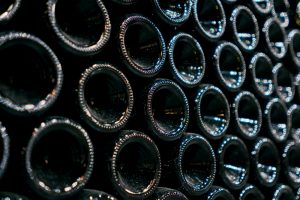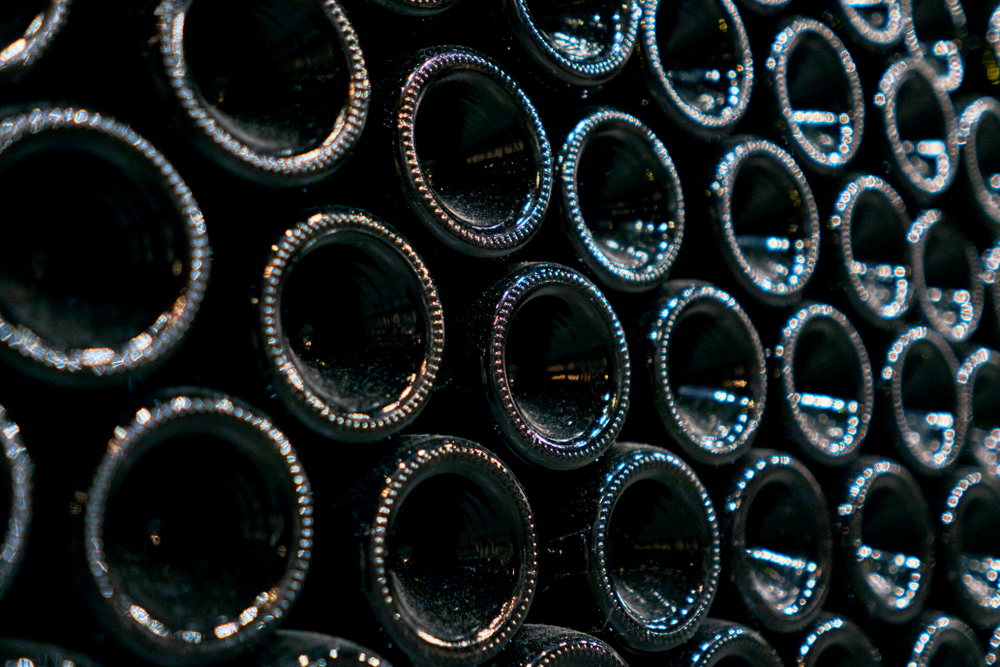While not all wines are destined for long-term cellaring, every wine deserves a stable home. Whether you’re looking for long-term storage for your age-worthy wines or just want to create a better environment for your everyday bottles, the conditions in which you keep your wines can make the difference between a beautifully fresh tasting bottle and a hollow, even vinegary, tasting wine.
There are four main factors that need to be taken into account when storing your wine.
Temperature:
Different styles of wines are generally served at different temperatures, but when it comes to storing wine, they are all treated the same way. Yes, all wines – red, rosé, white, sparkling, etc. – should be stored at between 45 and 65 degrees F, with the mid-50s being ideal. Anything above that and you risk damaging your wine – excess heat can “cook” your wine. Anything below 45 degrees can also be problematic, because oxygen is more easily dissolved in colder temperatures, meaning your wine can oxidize faster. Extremely low temperatures can cause your wine to partially freeze, and you risk bottles shattering. An exact temperature is not as important as a consistent temperature.
Humidity:
The level of humidity necessary for storing wine is between 50 and 80%, with around 70% being ideal. If you are storing wines in an area that has higher than 80% humidity, a dehumidifier can help create a more stable environment and prevent mold growth. Anything below 50% and you risk corks drying and excess oxygen getting into your wine. Bottles with natural corks should be stored on their sides to also keep the cork from drying out. Luckily, most households will fall in the 50-80%.
Light:
Excessive light, more specifically, UV rays from the sun, can damage your wine. This will rarely happen with household light bulbs –  unless you have very strong fluorescent bulbs – but keeping your wine in a dark location is important.
unless you have very strong fluorescent bulbs – but keeping your wine in a dark location is important.
Vibrations:
Vibrations are also important to avoid, as this can cause the wine to be constantly jostled, disturbing any sediment in older wines, or preventing sediment from settling.
So, where can you store your wine if you don’t have a cellar or wine fridge?
Your first instinct might be your basement. This isn’t a bad choice for most people, as long as you’re avoiding laundry rooms and boiler rooms. A laundry room or boiler room are not ideal places because there are large pieces of equipment that cause vibrations and that release heat. This causes fluctuations in temperature and humidity.
Even though you may be consuming your wine in your kitchen, this is one of the worst areas of your house for wine. When your oven or stove is on, there can be major changes in temperature. Most kitchens have windows that let in lots of light. This is perfect for tempting your neighbors with a fresh-baked pie, but not great for your sun-sensitive wine bottles.
A bedroom or hall closet is a great starting place – they are dark, generally undisturbed, don’t have direct heat, and don’t get direct sunlight.
If you’re serious about aging wine, consider buying a wine fridge specifically for storage, rather than for keeping bottles cool and ready for consumption – remember the difference between serving and storing temperatures.
When looking for a wine fridge, you want one slightly larger than you think in case you find an exciting new bottle to add to your collection. Make sure the bottles in your storage unit are easily accessible, that you can see what you’re grabbing without moving bottles around, and make sure the racks can fit different sized bottles. Bordeaux bottles are your standard size, Burgundy bottles have sloping shoulders and a wider bottom, Riesling or German bottles tend to be longer and slender, and sparkling wine bottles tend to be larger overall. Also, keep in mind that materials like wood can absorb humidity and warp or expand/contract at different temperatures. Most wine storage units have glass doors. If you are concerned about the light in your storage area, frosted or “smoked” glass can help, but better yet, just keep your wine fridge in a dark area of your house. If the glass is too dark to see the actual bottles, you’ll have to do a lot of opening to get anything out, which will disrupt the temperature/light exposure/humidity, etc.
Remember – wherever you choose to keep your wine, stability is key. A steady environment that includes a consistent temperature, unchanging humidity, little to no direct light, and no vibrations is going to keep your wines happy and healthy!



